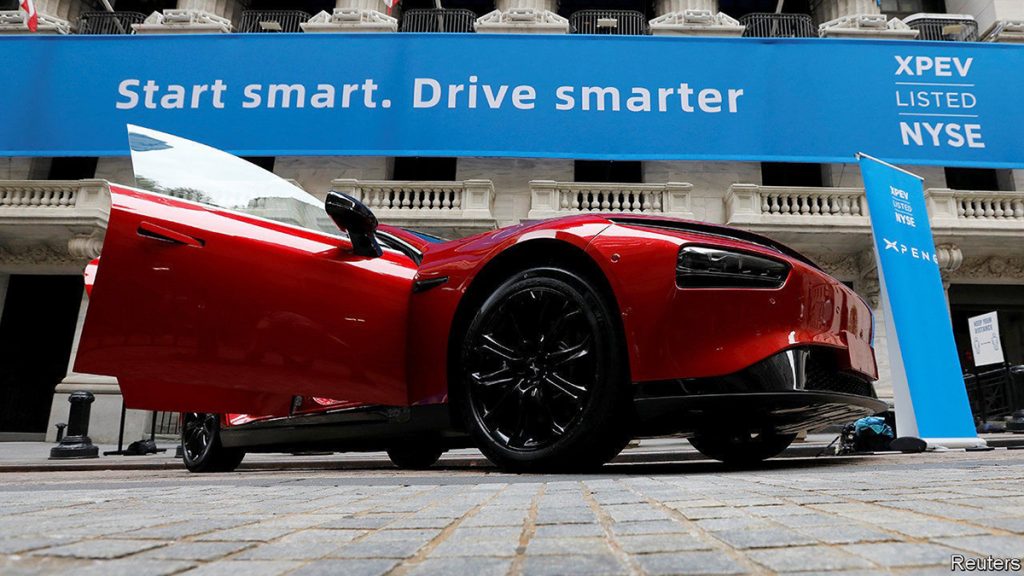CHINESE FIRMS gets a wintry reception in America these days. President Donald Trump is a ruthless China-basher. His administration has actually attempted to crush Huawei, a telecoms giant, restriction TikTok and WeChat, two popular Chinese-owned apps, and expel Chinese business noted on American stock exchanges. No wonder that some have avoided late. Ant Group, a fintech star that might as soon as have actually followed Alibaba, the tech titan with which it is associated, onto the New York Stock Exchange ( NYSE), will drift in Hong Kong and Shanghai rather. Last month Sina, the Nasdaq-listed owner of Weibo, China’s answer to Twitter, said it would go private in a $2.6 bn offer. A day later on Tencent, another Chinese online colossus, said it would purchase out Sogou, an NYSE– traded search company, for $3.5 bn.
Lots of Chinese companies that may once have flocked to New York City are considering their house stockmarkets. According to experts at Deloitte, from January to September new listings in Hong Kong raised some $28 bn, two-thirds more than in the exact same period in 2015. The cash raised by beginners to the biggest mainland exchanges, in Shanghai and Shenzhen, has actually reached 355 bn yuan ($53 bn), 2.5 times the equivalent figure in 2019.
Look better, though, and plenty of Chinese startups continue to yearn for American listings. In August KE Holdings, an online property company backed by Japan’s SoftBank Group raised $2.1 bn; X Peng, an electric-car maker, got $1.5 bn. Lufax, a fintech firm which this month submitted to go public on the NYSE, might raise $3bn. All informed, Chinese companies have actually raised almost $9bn in American initial public offerings ( IPO s) considering that January, and another $8bn in secondary share sales. Goldman Sachs, an investment bank, reckons that the money raised from Chinese IPO s on the NYSE and Nasdaq has held up throughout Mr. Trump’s presidency (see chart). The market worth of Chinese listings in America now surpasses $1.6 trn, of which American financiers hold almost a 3rd. Goldman Sachs forecasts a record variety of Chinese listings in New York city this year.
Why would Chinese companies flock to America provided the obviously poisonous environment? For something, as Adam Lysenko of Rhodium Group, a research company, points out, it is frequently easier to list on American exchanges than in China, with its more limiting regulatory routine. Ant’s hit stockmarket debut struck a last-minute snag this week when China’s top securities regulator unexpectedly delayed approval for the Hong Kong leg of its double listing.
An overseas listing likewise enables mainland business to get around China’s stringent currency controls. Gary Rieschel of Qiming Ventures, a venture-capital firm, states that going public in New York City, the world’s pre-eminent monetary center, makes sense for Chinese companies like Lufax keen on international growth. For increasing innovation start-ups in particular Wall Street also represents an imprimatur from the world’s most advanced investors and access to its deepest and most liquid capital markets.
Investors, for their part, get a piece of its perkiest stocks. Overall returns for an index of Chinese companies noted in America tracked by BNY Mellon, a bank, have actually risen by nearly half in the past 12 months, two times the rate for the S & P500 index of huge American companies. Mr Lysenko calculates that from 2017 to 2019 Chinese firms listed on American exchanges traded at higher appraisals relative to incomes than business in the S & P500, on the Nasdaq, or indeed those whose shares altered hands on the Shenzhen and Hong Kong stock markets. These “red” stocks are merely too tasty for American investors, red as they already remain in tooth and claw, to give up.
